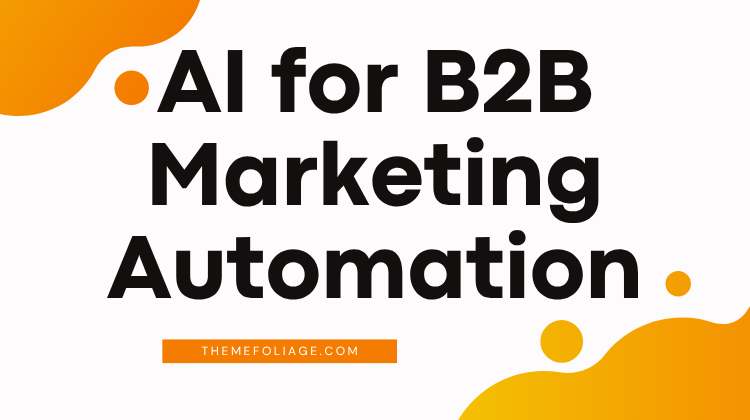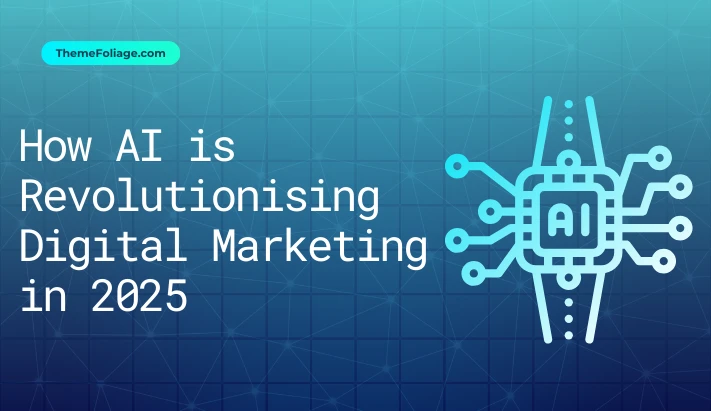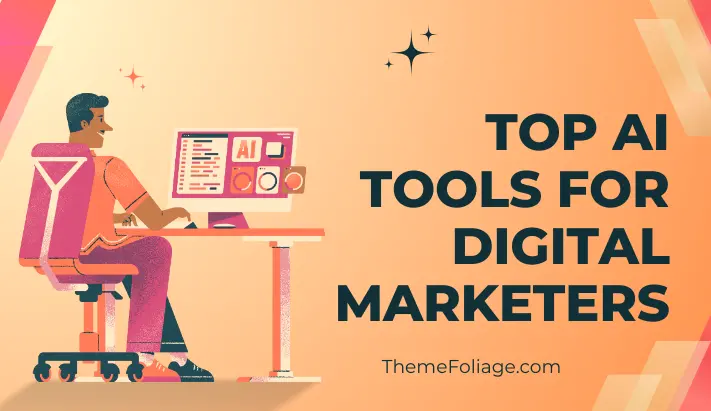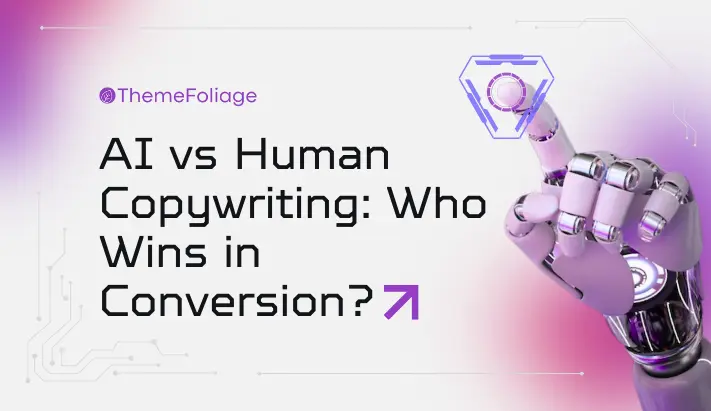B2B marketers face an ever-growing challenge: complex buying cycles stretched across multiple stakeholders, channels, and touchpoints. Traditional lead generation tactics, trade shows, cold outreach, static email blasts, no longer scale to the pace and volume demanded by modern revenue teams.
Meanwhile, buyers have grown accustomed to on-demand, personalised digital experiences. AI for B2B marketing automation addresses these pressures by infusing machine learning into every stage of the funnel, from identifying target accounts to orchestrating nurture programs, accelerating pipeline velocity and boosting marketing ROI.
By 2025, AI-driven marketing automation is no longer a luxury, it’s a prerequisite for competitive differentiation. Organisations that harness predictive models, real-time intent data and smart orchestration engines will capture higher-quality leads, tailor content dynamically, and coordinate cross-channel campaigns with minimal manual intervention.
The result is a self-optimising engine that continuously learns which messages resonate, which offers convert, and where to allocate budget for the greatest impact.
Core Capabilities of AI-Driven B2B Automation
At its heart, AI for B2B marketing automation unites advanced analytics, natural language processing, and integration frameworks into cohesive platforms.
These systems ingest vast datasets, CRM records, web behavior, firmographics, technographics and third-party intent signals, to power four foundational capabilities:
- Predictive Lead and Account Scoring.
- Hyper-Personalised Content Orchestration.
- Automated Multi-Channel Campaign Execution.
- Real-Time Performance Insights and Attribution.
Predictive scoring models analyze historic win-loss data and engagement patterns to rank prospects and accounts by propensity to buy. Personalisation engines dynamically assemble email copy, landing pages, chat interactions, and ads based on individual buyer profiles.
Automated workflows then launch personalised cadences across email, chat, social, and events without manual triggers. Dashboards surface anomalies, like sudden dips in lead velocity, and recommend corrective actions instantly.
Together, these capabilities reduce friction, eliminate repetitive tasks, and free marketing teams to focus on strategic initiatives.
Reinventing Lead Generation and Prospecting
In B2B environments, the most precious commodity is high-intent data. AI transforms prospecting by scanning billions of digital signals, search queries, content consumption, job postings, and social media chatter to detect emerging buyer intent.
Platforms like Demandbase’s AI Insights ingest intent feeds and marry them to known accounts in your CRM, alerting reps the moment target companies engage with relevant topics online.
Rather than relying on static lists of purchased contacts, AI “listens” for keywords, topics, and patterns that indicate buying signals. When an account triggers intent thresholds, researching new software solutions or engaging with competitive content, automated alerts kick off tailored outreach sequences.
This proactive approach ensures sales-ready opportunities materialise in the hands of reps before competitors even know they exist.
Moreover, AI-driven conversational marketing solutions like Qualified’s Piper leverage real-time website behaviour to qualify visitors via chat, then route high-fit leads directly into Salesforce or Marketo bypassing manual entry and accelerating handoffs to sales teams.
By combining intent detection with live conversation automation, organisations close response-time gaps and nurture prospects when their interest peaks.
Elevating Lead Nurture and Personalisation
Once a prospect enters your funnel, AI-driven nurture engines personalise every interaction. Early frameworks from providers like AveryClicks demonstrated how combining human strategy with AI precision increases email deliverability and engagement by dynamically adjusting send cadence, subject lines, and content blocks based on subscriber behaviour. In 2025, these capabilities extend far beyond email.
Modern AI orchestrators analyze each contact’s digital footprint, page views, content downloads, webinar attendance, and tailor nurture tracks accordingly.
A prospect who attended a product demo but skipped a case-study download will automatically receive a testimonial-focused message, while a buyer who engaged with ROI calculators might be routed to a personalized pricing discussion.
At each stage, AI algorithms evaluate past campaign performance to select the highest-impact next step, ensuring messages align with both individual interests and overarching business objectives.
Natural language generation (NLG) further scales personalisation by writing tailored copy at scale. Instead of generic templates, AI crafts paragraphs that mention a contact’s industry challenges, reference recent events they attended, or highlight features they viewed on your site.
The result is a one-to-one experience across thousands of leads, maintaining brand consistency while engaging buyers with relevant, timely content.
Predictive Scoring and Account-Based Strategies
Account-Based Marketing (ABM) thrives on laser-focused outreach to a finite set of high-value targets. AI elevates ABM by continuously recalibrating account scores based on fresh signals, technology usage changes detected in public job listings, executive moves announced on LinkedIn, or newly published procurement tenders. Machine-learning models process these diverse inputs to surface a dynamic list of priority accounts and contacts.
Predictive account scoring frameworks ingest both first-party and third-party data to forecast which accounts are most likely to convert this quarter.
They consider factors such as in-market signals, fit criteria (revenue, industry vertical), and engagement velocity. Sales and marketing can then dedicate budget and bespoke content resources to the smallest list of accounts that promise the highest pipeline yield.
AI also revolutionises personalisation at the account level. Multi-channel orchestration engines craft bespoke campaign journeys for each target, weaving together direct mail, account-specific webinars, targeted LinkedIn ads, and personalised video outreach.
At scale, these workflows adapt in real time, if a target executive joins a live Q&A session, the system may trigger a follow-up email with a whitepaper relevant to their questions.
Streamlining Multi-Channel Campaigns
B2B buyers interact with brands across a multitude of touchpoints: website visits, email engagement, social media interactions, chatbots, events, and direct outreach.
Manually coordinating campaigns across these channels is resource-intensive and error-prone. AI marketing automation platforms unify channel orchestration under a single, intelligent control plane.
Marketers define high-level campaign objectives “generate 50 MQLs,” “accelerate demo requests,” or “drive 200 webinar registrations” and AI engines translate those goals into detailed, channel-specific sequences.
They schedule emails when recipients are most likely to engage, launch retargeting ads when prospects leave your site, and deploy chat invites at high-intent pages. Meanwhile, automated audience refreshes ensure lists remain up to date as contacts move through the funnel.
This centralised orchestration also harmonises messaging to prevent channel conflicts and message fatigue. AI determines optimal frequency caps and injects variation into content templates, preventing subscribers from seeing identical offers across email and LinkedIn, for example.
By balancing automation with strategic campaign planning, teams can launch sophisticated, multi-touch campaigns in days rather than weeks.
Automated Analytics and ROI Attribution
Measuring the impact of B2B marketing has historically been fraught with attribution challenges. Multi-touch buyers obscure the influence of individual tactics, and manual report assembly in spreadsheets delays insights.
AI-driven analytics automation reshapes this landscape by ingesting raw data across CRM, marketing automation platforms, ad networks, and web analytics to generate real-time dashboards and narrative reports.
Natural language query interfaces let marketers ask conversational questions “Which nurture track drove the highest pipeline last month?” and receive instant answers with visualisations.
Anomaly detection algorithms monitor key metrics such as lead velocity, cost per lead, and conversion rates, sending alerts when performance deviates from expected ranges.
Revenue attribution models leveraging machine learning assign credit across touchpoints more accurately than rigid, rule-based approaches.
Beyond reporting, AI provides prescriptive recommendations: shifting budget from underperforming channels, pausing low-engagement segments, and doubling down on high-ROI creative variants.
By automating both insight generation and recommended actions, AI ensures that marketing teams can pivot quickly, optimising campaigns on the fly without waiting for manual analyses.
Implementation Blueprint: Deploying AI at Scale
Rolling out AI for B2B marketing automation requires more than flipping a switch. Success hinges on data integrity, change management, and strategic alignment. Key steps include:
- Audit and Cleanse Data
Consolidate CRM, marketing automation, web analytics, sales activity, and external intent feeds into a central data warehouse. Standardise nomenclature, campaign names, lead statuses, account fields, to ensure consistent model training and reporting. - Define Clear Objectives and Metrics
Align on target KPIs such as lead quality score, MQL-to-SQL conversion rate, pipeline velocity, and marketing-influenced revenue. Establish control groups and holdout segments to measure AI-driven uplift accurately. - Select the Right AI-Enabled Platform
Evaluate vendors based on core capabilities: predictive modelling, NLG-driven content, cross-channel orchestration, real-time analytics, and ease of integration. References like Demandbase’s “15 Best AI Marketing Tools for B2B Success” and TheCMO’s “16 Best AI Tools for B2B Marketing” can guide your shortlist. - Train and Validate Models
Use historical performance data to train initial predictive and scoring algorithms. Validate accuracy against holdout datasets, and refine feature sets, firmographic criteria, engagement signals, to reduce false positives and negatives. - Configure Workflows and Templates
Build modular campaign templates with replaceable content blocks and decision nodes. Configure next-best-action rules to steer prospects through personalised journeys based on real-time engagement. - Launch Pilot Campaigns
Start small with one high-impact use case, account-based prospecting or email nurture for a flagship product. Measure results against both manual benchmarks and control segments to quantify AI’s incremental value. - Iterate and Expand
Regularly retrain models with new data, adjust business rules, and expand AI-driven workflows to additional channels and regions. Incorporate learnings from pilot campaigns to refine scoring thresholds and content strategies. - Foster Cross-Functional Collaboration
Align marketing, sales, operations, and IT teams. Establish governance processes for data updates, campaign review, and AI model monitoring. Assign clear ownership for performance tracking and model management.
Selecting the Right AI Tools
The AI for B2B marketing automation market has matured rapidly. According to ISBM’s “20+ AI Automation Tools Transforming B2B Marketing in 2025,” solutions span from end-to-end suites to specialised modules for email, chat, analytics, and ABM strategy. When choosing technology, consider:
- Depth of Predictive Analytics: Does the platform support custom model building on your unique datasets?
- Content Automation Features: Are NLG and dynamic content blocks robust enough for hyper-personalisation?
- Channel Coverage: Can the system orchestrate across email, web, chat, social ads, and events seamlessly?
- Integration Flexibility: How easily does the solution connect to your CRM, CDP, sales engagement, and BI tools?
- Usability and Governance: Does the platform offer intuitive campaign builders, audit trails, and permission controls to maintain compliance?
Balancing functionality with ease of adoption ensures you derive value quickly while laying the groundwork for future sophistication.
Measuring Success: KPIs for AI-Powered Automation
Effective measurement combines both traditional and AI-specific metrics. In addition to lead volume and conversion rates, track:
- Predictive Score Accuracy: Correlation between AI-assigned lead scores and actual conversion outcomes.
- Campaign Velocity: Reduction in time-to-launch for multi-channel campaigns compared to manual processes.
- Content Engagement Lift: Improvements in email open and click rates when using AI-generated subject lines and copy.
- Budget Allocation Efficiency: Percentage of ad spend reallocated automatically to high-performing segments.
- Model Drift Detection: Frequency of retraining cycles triggered by declining performance in predictive models.
- Automation Adoption Rate: Proportion of campaigns and workflows executed through AI versus manual setups.
Combining these KPIs with overarching revenue impact illuminates AI’s true contribution to pipeline growth and marketing ROI.
Pitfalls and Best Practices
While AI brings immense benefits, pitfalls can undermine results. Common challenges include:
- Poor Data Quality: Incomplete or inconsistent data sabotages model accuracy. Mitigate with ongoing data governance and integration audits.
- Over-Automation Without Oversight: Fully autonomous campaigns risk misalignment with brand voice or compliance requirements. Implement human approval gates for high-risk templates.
- Alert Fatigue: Excessive anomaly notifications dilute focus. Calibrate thresholds and allow marketers to customise alert channels.
- Black-Box Models: Lack of explainability breeds mistrust. Choose platforms offering transparent feature importance and decision logs.
- Ignoring Change Management: Without stakeholder buy-in and training, AI initiatives falter. Invest in cross-functional education and success stories to build momentum.
Adhering to these best practices ensures AI-powered marketing scales responsibly and sustainably.
Future Outlook: AI’s Evolving Role in B2B Marketing
As AI continues to advance, several emerging trends will redefine B2B marketing automation:
- AI-Native Buyer Interfaces: Platforms like Salespeak envisage a future where AI acts as the primary interface, supporting conversational discovery and replacing legacy funnels altogether.
- Generative Content Beyond Text: AI-driven video scripts, dynamic infographics, and personalised interactive experiences will further deepen engagement.
- Autonomous Revenue Engines: Full-cycle systems that ingest data, generate campaigns, optimise bids, and route qualified leads directly to sales will blur the lines between



